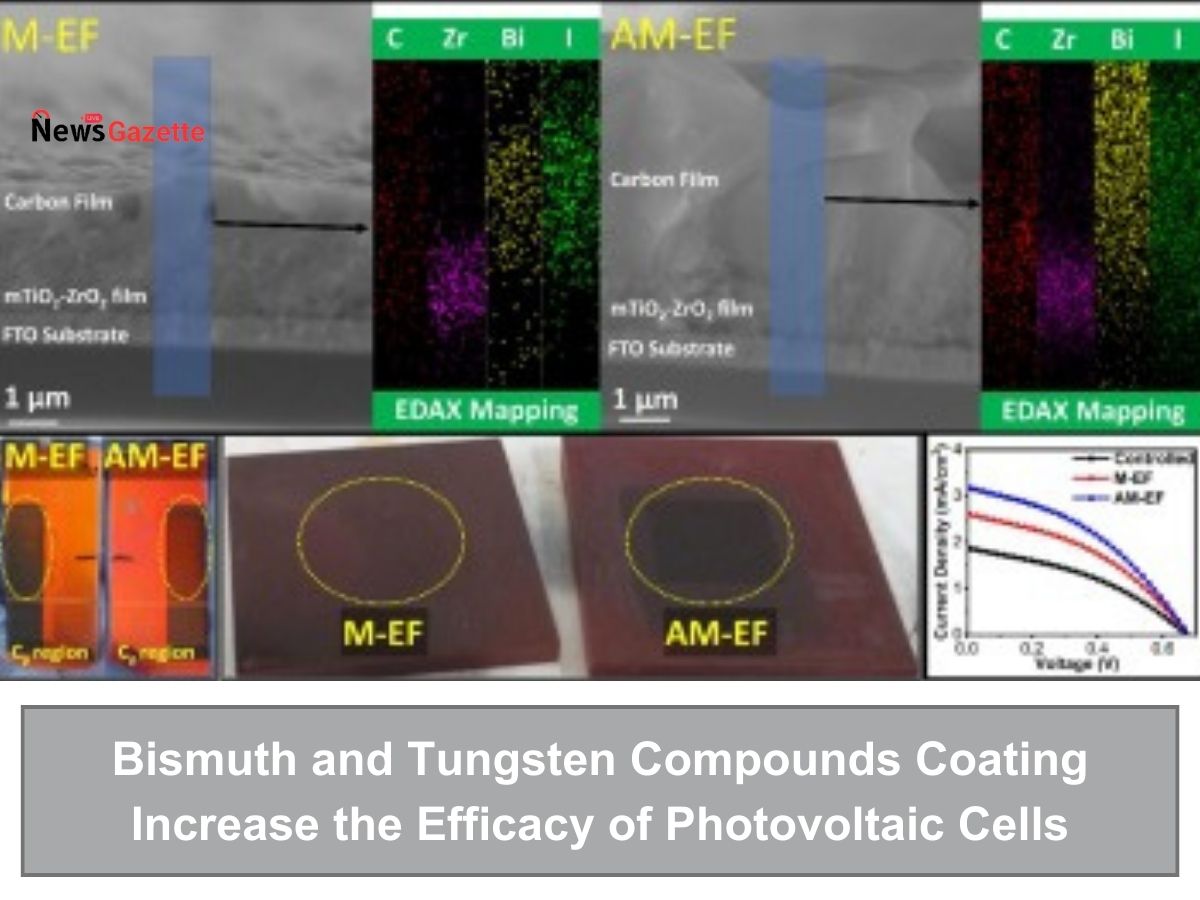
Bismuth and Tungsten Compounds Coating Increase the Efficacy of Photovoltaic Cells
Defined as the sum of all the agencies involved in the production and commercialization of energy, the energy industry is considered the heart of a country’s development and an integral part of its economy. The energy production sector traditionally utilized fossil fuels like coal and petroleum to generate electricity. Majorly dominated by non-renewable energy sources, it faces the threat of a total collapse due to depleting reserves. Furthermore, a growing concern of environmentalists all over the world with regard to the deterioration of ozone and increasing carbon footprint, pioneers around the world armed themselves with innovations supporting a better future.
Solar energy is the most preferred source of green energy due to its noninvasive nature and ease of transition both financially and physically. However, temperature variation and sunlight intensity throughout the day prevent the solar unit from attaining 100% efficacy. Energy loss-related issues had been a major hurdle for several renewable energy-based projects and initiatives. Scientists from India have explored various strategies to improve the efficacy of these solar powered panels. Bismuth and tungsten emerged as promising candidates for this venture.
Contrary to theoretical models, real-world solar panels are unable to maintain a constant generation of energy at different times of the day. Every solar unit is designed to provide the highest possible electric output for a given temperature and under a specific solar irradiation. Known as the maximum power point, it is a value at which a solar panel can deliver full electrical power for a particular amount of irradiation. In other words, the fluctuation in sunlight and temperature will move the maximum power point, resulting in lower electric output.
In a bid to improve the solar energy generation capacity, researchers studied the influence of various energy levels for laser fabrications on the photovoltaic cells. Photovoltaic integrity along with several other parameters, were analyzed on the tungsten trioxide and bismuth ferrite thin film bilayer. “The high leakage current of BFO thin films is a major concern while handling it for device applications, fabrication of bi/multilayer thin film of BFO with other materials to provide an insulating intermediate layer has been put forward to resolve this problem.” the study group said.
Read Also: Floating Photovoltaics Mapping: A Future to the Global Solar Development
Researchers investigated a range of combinations of tungsten trioxide and bismuth ferrite to study the synergistic potential of the compounds, a parallel analysis involved multiferroic properties and an insulation effect. To understand the physical properties of the thin bilayer films, scientists first produced a thin layer of tungsten trioxide onto indium tin oxide substrates and silicon structures coated with glass. This was then followed by the growth of a bismuth ferrite layer on this nanostructure scaffold using the pulsed laser deposition technique.
This allowed the researcher to control the thickness and composition of the thin films. Laser energy levels range between 150 milli joules and 250 milli joules. A comparative analysis between the energy levels at every 25 milli joules intervals helped identify 200 milli joules as the optimal standard for the tungsten trioxide and bismuth ferrite thin film bilayer. When a 200 milli joules bilayer was exposed to irradiation, a 320 milli Volts open circuit voltage and an 18 mA/cm^2 short-circuit photocurrent density was obtained. Scientists theorized that the response may be a product of a better crystalline structure, lesser band gap value, minimum current leakage density, and a higher polarization value.

Joshua Austin joined News Gazzte as a senior editor in 2023. Joshua is an automotive journalist who previously worked as an autonomous vehicle test engineer at Uber. He holds a bachelor’s degree in computer science, with a specialization in technical writing and journalism. Joshua’s enthusiasm lies in automotive technology and the evolution of transportation. He remains vigilant in tracking the most recent developments in electric vehicles, autonomous driving, and other emerging technologies.
